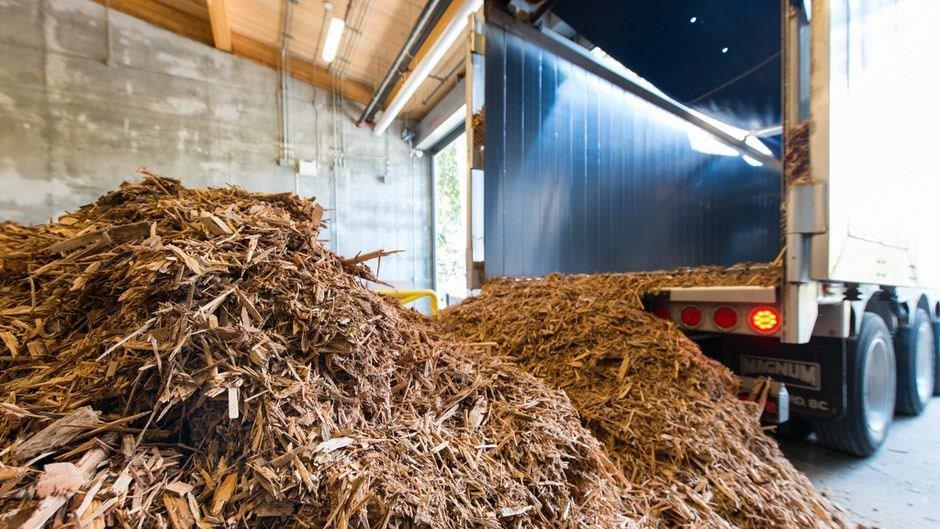
The North East Forest Alliance (NEFA) has described a plan to provide up to one million tonnes of trees each year to generate electricity as sheer madness. Source: The Northern Star
The Department of Primary Industries (DPI) released new research indicating forestry “residue” could be used to provide bioenergy to power up to 200,000 homes.
The alliance however, expressed concerns the plan would mean an increase logging intensity in north-east NSW forests to “provide up to one million tonnes of trees each year to generate electricity as sheer madness”.
Spokesman for the alliance Dailan Pugh said: “Forests are the lungs of the earth, they take in our carbon dioxide, storing the carbon and giving us back oxygen, left standing they are part of the solution to climate change, cut down they become part of the problem.
“Burning forests to generate electricity doesn’t make sense, we lose the tree’s ability to take in and store carbon, and when they are burnt they release more carbon dioxide into the atmosphere than burning coal.
“The forestry ‘residues’ DPI are proposing to use are tree trunks (down to 10cm diameter and at least 2.5m long) with the crowns, branches, defective stems, and stumps left behind in the forest.
“Most of these will come from logging trees that would otherwise be retained. “This proposal is all about increasing logging intensity and developing a new market to replace export woodchipping as the sawlog resource is progressively cut out.
“The reality is that logging has run down the carbon storage in vast tracts of NSW’s forest by 40-60%. As logging intensity increases the carbon stored in the trees and soil, along with the forest’s structure and biodiversity, is further diminished.
“We are facing a climate emergency. Burning forests for electricity is sheer madness.
“If we want to address the climate chaos caused by rising atmospheric carbon we need to quickly move to obtaining our energy from non-polluting sources, such as wind and solar, while restoring the ability of our forests to take-up and store increasing volumes of carbon as they age.
“We need to stop logging of public native forests not increase it.”
The National Parks Association of NSW (NPA) have also weighed in on the issue, urging the Premier to resist calls from the Department of Primary Industries (DPI) to burn north coast forests for power.
They labelled the practice ‘outdated’ and said the practice could drive deforestation and climate change.
NPA Senior Ecologist, Dr Oisín Sweeney said: “It’s hard to imagine a worse idea than this. Given what we know that biomass use overseas is driving deforestation, and the evidence that burning forests for power is driving climate change, this is reckless in the extreme.
“Coming from a Government Department that has a responsibility to serve the public interest moves it from merely ill advised to downright irresponsible.
“The Australian Government tells us that logging removes carbon stores from forests, and that north coast forests have huge carbon storage potential.
“Yet here’s a suggestion to log forests and burn them for power. That’s perverse given we urgently need to tackle climate change, and has serious implications for human health as it results in air pollution.
“Burning forests for power would put a big hole in the NSW Government’s ambitions to have net zero emissions by 2050, because it will reduce the land based carbon stores needed to complement emissions reductions. The Premier, in light of the evidence as to emissions from biomass, should choose genuine renewables.
“Burning forests has long been an industry aim. That’s why the NSW Government permitted the burning of whole logs in 2013, and the Federal Government made biomass eligible under the renewable energy target.
“North coast forests are one of just 36 global biodiversity hotspots. Koala populations are in steep decline-partly due to intensive native forest logging. Now this suggestion to burn them. “Survey after survey shows strong community support for genuine renewables like solar, yet this idea would have us use stone age technology.
“The community has a clear choice: burn public forests and drive wildlife towards the cliff, or end logging and use genuinely innovative technology to generate clean energy.”
New research suggests there are enough residues in the North Coast’s sustainably managed forests and sawmills to power more than 200,000 local homes per year.
The news forms part of a recent report by the NSW Department of Primary Industries (DPI), which found more than one million tonnes of forestry residues from harvesting operations could be used for bioenergy, with no adverse environmental impacts.
DPI Research Scientist Fabiano Ximenes, who is presenting findings at the Bioenergy2017 conference in Sydney, said the two-and-a-half-year project analysed the production forests surrounding regional hubs Grafton, Kempsey and Bulahdelah.
“The research showed that there are also exciting opportunities in the production of biofuels and high-value chemicals, so there is significant untapped potential in NSW forests,” he said.
“Use of the biomass for bioenergy has the potential to significantly reduce greenhouse gas emission reductions, due to the displacement of fossil fuels.
“There are also additional benefits of removing the residues that would otherwise decay or burn in the forest, such as a reduction in forest management operational costs, reduced fuel loads and supporting regional development by creation of a new industry.”
Recent changes in state and federal legislation also now recognise bioenergy as a renewable energy source.







